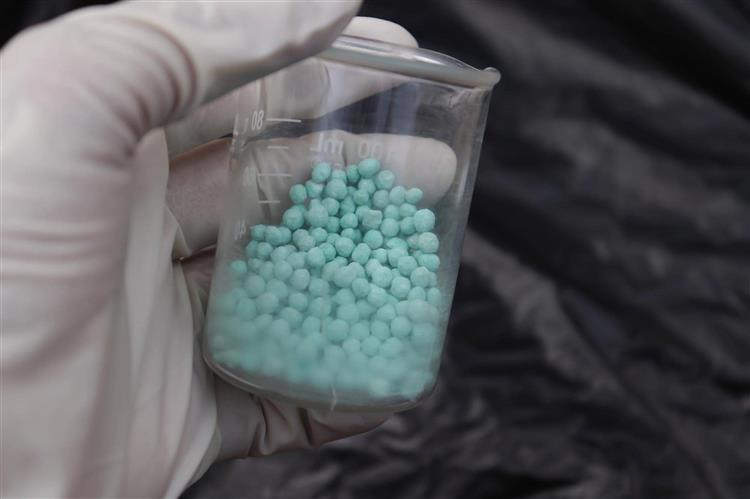
- 31 January 2024
- 1146 Views
Introduction to Urea
Urea stands as a cornerstone in the world of agricultural and industrial chemicals. Chemically known as carbamide and denoted by the formula (NH2)2CO, urea is distinguished by its high nitrogen content, making it an invaluable component in fertilizers. Beyond agriculture, urea's versatility extends into various industrial applications, showcasing its multifaceted utility.
This compound's journey from a laboratory discovery to a staple in global industries is a testament to scientific advancement and its practical application. This article aims to unravel the multifaceted world of urea, diving into its production process, widespread use in different sectors, and the evolving innovations that continue to expand its applications. The focus is not just on urea's chemical attributes but also on its significant role in shaping modern agricultural practices, industrial processes, and environmental solutions.
Overview of Urea
Urea Basics
Urea, a small yet impactful molecule, is a cornerstone in the world of fertilizers and beyond. Composed of two ammonia molecules joined by a carbonyl group, its chemical formula is (NH2)2CO. This simple structure belies its significant role as a nitrogen-rich compound, making it a preferred choice in agricultural fertilizers. Its high nitrogen content, which is about 46% by weight, is a crucial nutrient for plant growth.
Historical Context
Urea's journey from a biological waste product to a key industrial component is a story of scientific progress. It was first isolated in urine in the late 18th century by Hilaire Rouelle. The landmark synthesis of urea by Friedrich Wöhler in 1828 marked the birth of organic chemistry, as it was the first organic compound synthesized from inorganic materials. Since then, urea has evolved into an essential ingredient in agriculture and various industries, reflecting its versatility and indispensability.
Production and Properties of Urea
Industrial Production
In the industry, urea is synthesized on a massive scale from ammonia and carbon dioxide. This process, taking place under high pressure and temperature, produces urea and water. The Haber process for ammonia production and the subsequent urea synthesis are among the most significant industrial chemical processes in operation.
Key Properties
Urea's solubility in water and its relatively neutral pH make it an ideal fertilizer, as it can be easily applied in aqueous form and doesn't significantly alter soil pH. The high nitrogen content is readily available for plant absorption, making it a highly efficient means of fertilization.
Applications of Urea in Various Industries
Agricultural Use
In agriculture, urea stands as the world's most commonly used nitrogen fertilizer, providing an essential nutrient for plant growth. Its easy handling, storage, and application make it a popular choice among farmers globally.
Chemical Industry Applications
Urea's versatility extends into the chemical industry, where it's used to produce plastics, resins, and adhesives. Its reactivity and nitrogen content are valuable in creating a range of polymers and composite materials.
Medical and Beauty Products
In the medical and beauty sectors, urea finds a place in skincare and pharmaceutical products. Its hygroscopic properties and non-irritating nature make it ideal for moisturizers and dermatological formulations.
Environmental Use
Urea plays a role in environmental protection by reducing nitrogen oxide emissions in diesel engines. Products like AdBlue or Diesel Exhaust Fluid (DEF) utilize urea in catalytic converters to lower harmful emissions.
Urea's Environmental Impact and Sustainability
Agricultural Impact
While urea is beneficial as a fertilizer, its use raises environmental concerns such as potential water pollution through runoff and impacts on soil health. Managing its application to minimize these effects is a subject of ongoing research and development.
Sustainability Aspects
Efforts are underway to make urea usage more sustainable, focusing on reducing environmental impacts and improving efficiency in production and application methods.
Health and Safety Considerations
Industrial Safety
In industrial settings, handling urea requires precautions due to its corrosive nature, especially when heated. Proper storage and handling guidelines are crucial to ensure safety.
Health Implications
Urea is generally considered safe in consumer products, but occupational exposure, especially in its concentrated form, requires adherence to safety protocols to prevent health risks.
Innovations and Future Trends
Technological Advancements
Recent advancements in urea technology focus on enhancing its production efficiency and developing new applications, including environmentally friendly solutions.
Future Applications
The potential for new uses of urea in various industries is being explored, with an emphasis on sustainability and innovation.
Conclusion:
Urea, a compound as humble as it is vital, has carved a niche for itself across a spectrum of industries. From its predominant role in agriculture as a nitrogen-rich fertilizer to its applications in the chemical, medical, and environmental sectors, urea's versatility is unmatched. This article has traversed the journey of urea from its scientific discovery to its widespread industrial use, highlighting its crucial role in modern agriculture and various manufacturing processes.
The future of urea looks promising, with ongoing advancements aimed at enhancing production efficiency and developing sustainable applications. As we continue to innovate and seek environmentally friendly solutions, urea stands at the forefront of this quest, offering potential for new uses and applications. Understanding urea’s diverse roles and the safety measures required in its handling is essential for its effective utilization in various industries.
As we navigate the challenges of environmental sustainability and industrial efficiency, urea will undoubtedly continue to be a key player, evolving and adapting to meet the needs of a changing world.
